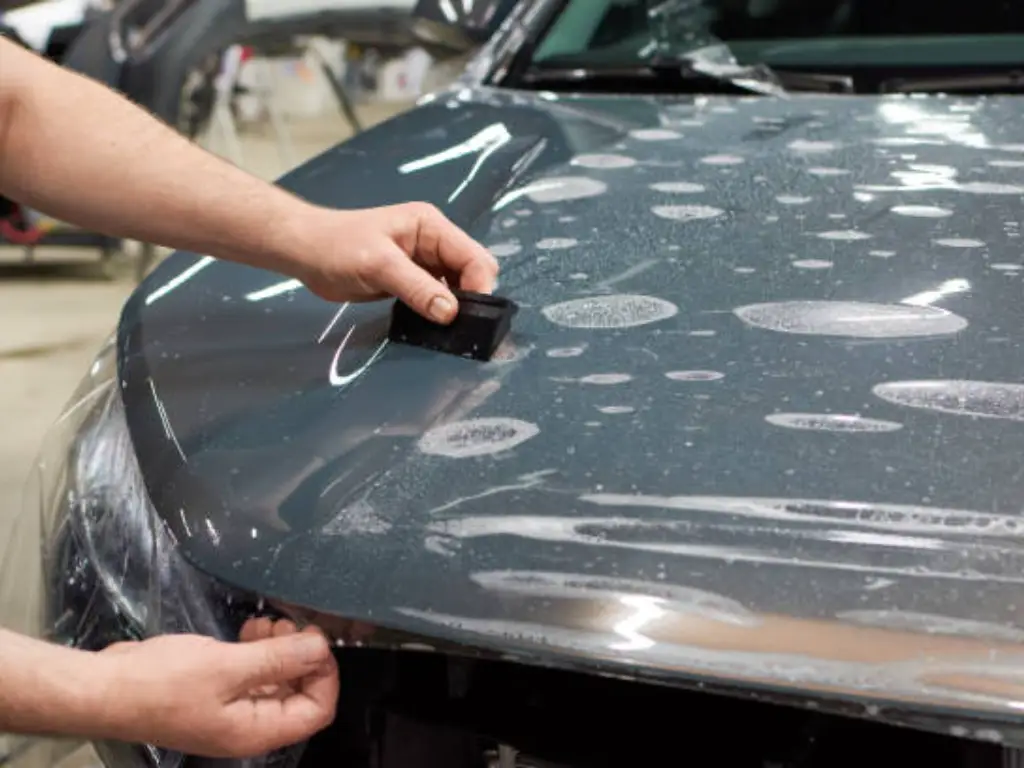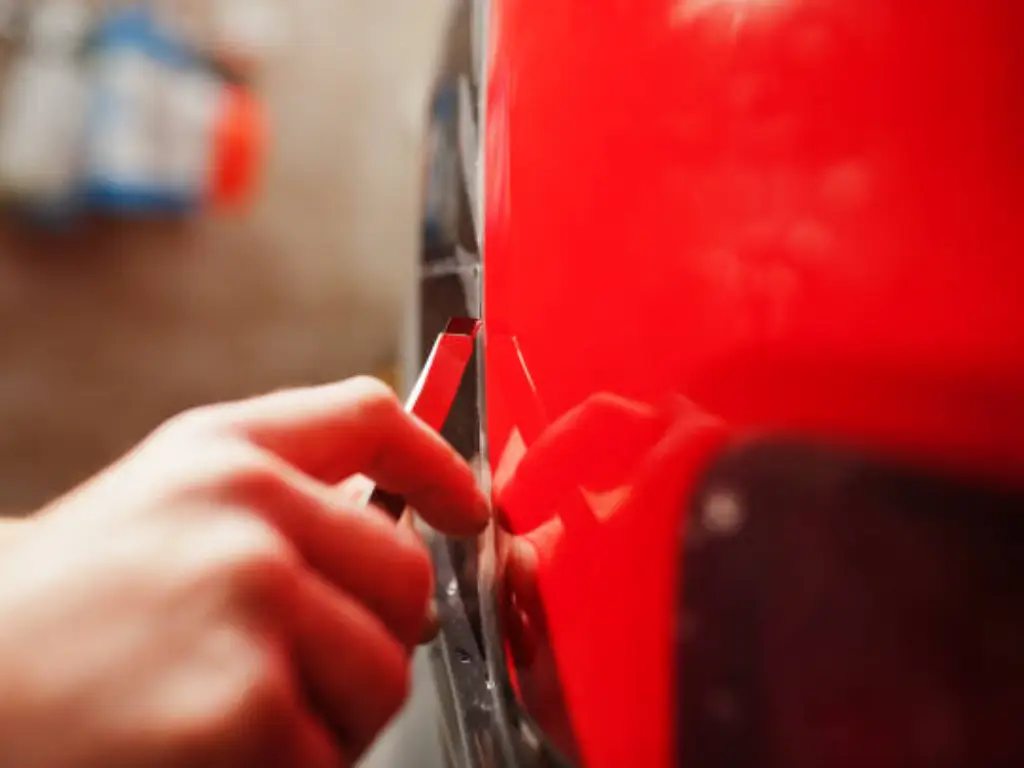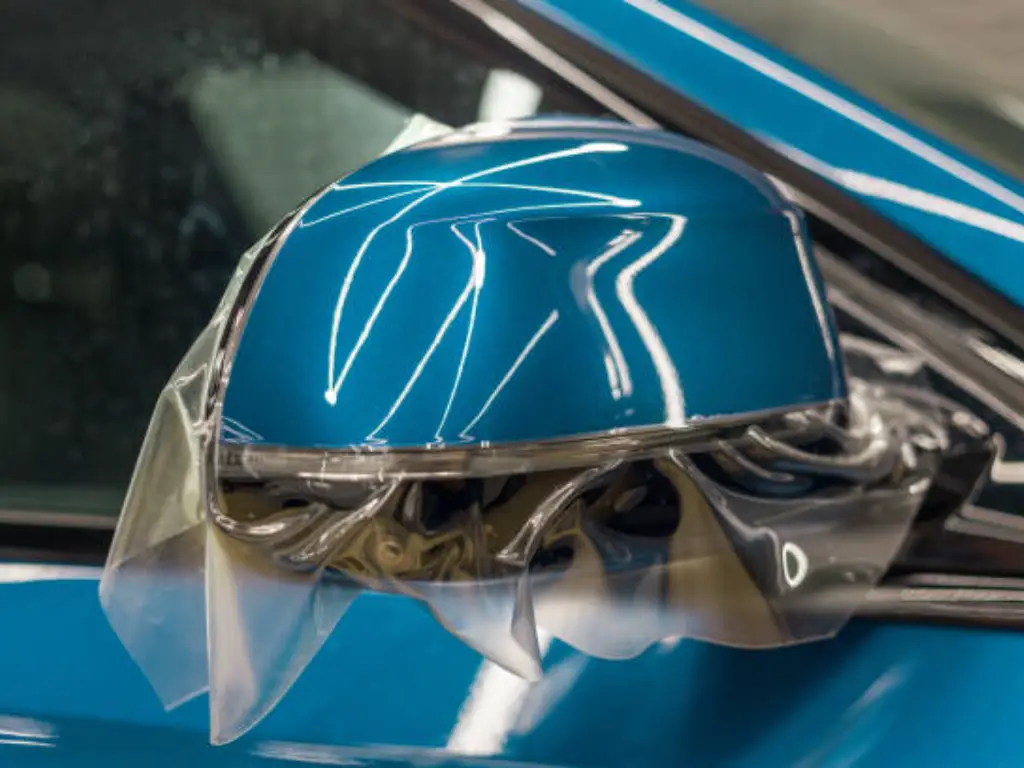Your love for automobiles, especially the shiny and flawless paint job, is evident as a motorist. Nevertheless, regular driving exposes your car to numerous risks such as road debris, scrapes, and UV rays that deteriorate the paint over time. At this point comes paint protection film (PPF) to the rescue. PPF is a thin, durable and transparent film placed on an automobile’s paint surfaces in order to avoid any damage on them underneath. In this article we will discuss about PPF and compare three most popular ppf varieties: TPU PPF, TPH PPF and PVC PPF.
The demand for car paint protection has increased rapidly over recent years with the global PPF market projected to reach USD 2.82 billion by 2027 at a CAGR of 6.4% from 2020 to 2027. This increase can be attributed to growing awareness among vehicle owners about the importance of PPF in maintaining their cars’ looks and resale value. Following this trend, manufacturers are continuously innovating and enhancing PPF materials so as to meet the dynamic needs of customers.
What is PPF (Paint Protection Film)?
Paint protection film, also known as the clear bra or clear film, is a transparent film applied to a car painted surfaces. It is an effective barrier against all sorts of mishaps that can cause harm to the paint such as bug splatters, stone chips, and scratches from small debris. The best thing about this particular film is that it can self-heal so that even minor swirl marks and scratches disappear with heat.
PPF comes in different thicknesses: 6 mil to 12 mil (1 mil =0.001 inches) being the most common one being 8 mil. Thickness determines its effectiveness in preventing damages on vehicle painting. The thicker films have greater flexibility in terms of impact resistance but may be harder to install due to increased experience needed for achieving a smooth non-porous application surface. Thickness selection is case-specific depending on where it will be applied to and the type of vehicle involved. For instance, heavier films should be used for areas prone to heavy impacts such as front bumpers, hoods as well as side mirrors; lighter ones would work well for other parts which are not necessarily in danger of getting damaged easily.
Importance of PPF in Automotive Care
Paint protection film is essential for maintaining the aesthetic and resale value of vehicles. It serves as a robust barrier that protects the paintwork from staining, etching from bird droppings, and swirling caused by regular washing. By preventing these types of damage, PPF not only keeps the car looking newer for longer but also reduces the need for frequent maintenance, thereby lowering overall upkeep costs.
In areas with harsh weather conditions, such as extreme sun exposure and high UV rays, PPF is invaluable. It helps prevent the fading and oxidation of the paint, issues that are not just cosmetic but can also affect the vehicle’s structural integrity over time. This added layer of surface protection is especially important for maintaining a car’s appearance and value in challenging climates.

TPU vs. TPH vs. PVC PPF: Detailed Introduction
1. TPU PPF
For those who are concerned with quality, thermoplastic polyurethane (TPU) is the best choice among paint protection films. It is nearly invisible once applied and has fantastic optical clarity; it also remains valuable for many years due to its durability. Flexible TPU can be used on curved surfaces so that they are completely shielded without any creases or bubbles.
To enhance their performance; TPU paint protection film must be able to resist staining well, this will ensure the original look of the car’s paint is not wasted. On top of that, it does not fade over time hence compromising the look of a vehicle. A little detail about TPU should however make it very attractive to any user: its self-healing capabilities which can erase minor scratches and swirls when exposed to heat like sunlight or vehicle engine warmth. This feature defines it as an excellent option for maintaining a perfect exterior irrespective of whether one lives in harsh conditions or others. Furthermore, these films won’t corrode neither would they get stained by chemicals such as bird droppings and bug splatter – making them more resilient against environmental factors that cause etching.
2. TPH PPF
Thermoplastic polyolefin (TPH), a hybrid material, combines the beneficial properties of both polyurethane and PVC, making it a mid-range option in terms of cost and performance. TPH is cheaper than TPU but gives improvements over PVC that come in handy for car owners who need effective protection on their cars without much money spent on it. It has been designed to endure ordinary scratches and withstands environmental elements as much as possible.
Though TPH film has good lasting qualities, it lacks that ability of self-repair that is found in TPU, making this aspect a disadvantage for some people looking for maintenance-free property. Eventually, over time, the former (TPH) may wear out more than the latter (TPU) especially if the vehicle is exposed to bad weather conditions frequently. Its performance falls short of that required from TPU although it suits those who want moderate protection.
3. PVC PPF
The least expensive of the PPFs is polyvinyl chloride (PVC), which makes it affordable for car owners on small budgets. It offers basic protection by protecting the paint from scratches and minor stains. However, it does not have the enhanced features of the more costly alternatives. This can make fitting difficult due to its rigidity especially on vehicles that have complicated curvatures causing imperfect fit.
PVC films are less resistant to sunlight effect either through discoloration or degradation, thus ultimately turning yellow over time. Such an effect reduces attractiveness and interferes with protective features of such a film. Additionally, this material has a shorter years of life than TPU and TPH hence should be replaced after shorter periods making it unsuitable for long-term protection plans. PVC is however still a viable alternative when low protection is required at minimal cost.
Comparative Analysis
TPU PPF vs. TPH PPF vs. PVC PPF
| Feature | TPU PPF | TPH PPF | PVC PPF |
| Cost | High | Moderate | Low |
| Durability | Very high; maintains integrity for many years | Good; less durable than TPU but more than PVC | Low; shortest lifespan |
| Protection Level | Superior; includes self-healing capabilities | Moderate; resists ordinary scratches | Basic; protects against minor scratches and stains |
| Flexibility | High; excellent for curved surfaces without creases | Less flexible than TPU | Low; rigidity causes difficulty in fitting |
| Resistance to Staining | High; resists chemicals and environmental damage | Moderate; less resistant to chemicals than TPU | Low; prone to discoloration and degradation |
| Aesthetic Maintenance | Excellent; does not fade or yellow over time | Good; may wear out faster in bad weather | Poor; turns yellow and degrades visually over time |
| Self-Healing | Yes; minor scratches and swirls can disappear under heat | No | No |
| Suitability for Long-term Use | Best suited for long-term protection | Suitable for moderate-term protection | Least suited for long-term plans |
Summary
TPU material stands out as the premium option for those prioritizing quality and durability, offering exceptional properties like self-healing and resistance to environmental damages. TPH material presents a balanced choice, providing reasonable protection at a lower cost than TPU, though it lacks some of the high-end features such as self-healing. PVC PPF, being the most cost-effective, offers basic protection and is suitable for those with minimal protective needs and budget constraints. Each type of film has its advantages and limitations, making the choice dependent on specific requirements and budget considerations.

Conclusion: Which is the best PPF for Car Paint Protection?
Absolute best choice for those car owners who want their vehicle paint to last long, be resistant to wear and look good is TPU PPF (Thermoplastic Polyurethane). Although it has higher initial cost, the price of this investment is reasonable because it offers superior protection and lower maintenance in the long run. In addition, TPU PPF has an added advantage of being able to sustain a car’s appearance in its original form over a very long period of time. Moreover, when under heat like sunlight or engine warmth, TPU PPF can self-embrace itself into the minor scratches and swirls hence little future maintaining that will be needed. Thus, it would be the most astute decision on which paint protection film to choose if one wanted to ensure his or her car remains at its highest possible condition state.
Looking for High-end TPU PPF?
If you want the best protection for your car’s paint, high-end TPU PPF solutions are very strong and last a long time. These top products help keep your car’s paint looking new and protect it from all kinds of weather and damage, making sure your car looks great for many years.
One of the best companies making TPU PPF is ClearPro in China. They use many special technologies that they have created themselves. ClearPro works hard to make sure their protection is the best for people who really care about their cars. They use new materials and focus on making high-quality products. This means your car gets the best care to keep looking beautiful and stay strong. If you want to keep your car looking new, talk to ClearPro to find out more about their products and how they can help your car stay in great shape.
FAQs
Absolutely. TPU offers significantly better durability, flexibility, and protection against environmental damage compared to traditional PVC. Its stain resistance and chemical properties make it superior in safeguarding your car’s original paint from hazards like acid rain and UV rays.
TPU stands out as the best PPF material, recognized for its robust protection ability, longevity, and advanced self-healing properties. It’s a new generation paint protection film that combines high gloss, toughness, and the most hydrophobic surface, which repels water and dirt effectively.
TPU PPF forms a protective film that absorbs impacts and resists scratches. Its hydrophobic coating and excellent adhesion help repel water and dirt, maintaining the car’s aesthetic appeal. The use of heat guns can further enhance its self-healing properties, ensuring any minor damages are quickly remedied.
The lifespan of TPU PPF can extend up to 10 years due to its superior polymer composition, which offers enhanced elasticity and chemical stability. TPH has a service life of about 5-7 years, while traditional PVC typically lasts about 2-3 years under normal usage conditions.
TPU offers the best UV protection, preserving the color and clarity of your car’s coating over long periods. TPH performs moderately better than traditional materials like PVC, which is prone to yellowing under UV exposure due to lesser chemical stability.
